Smoothing the Transition to Special Needs Preschool
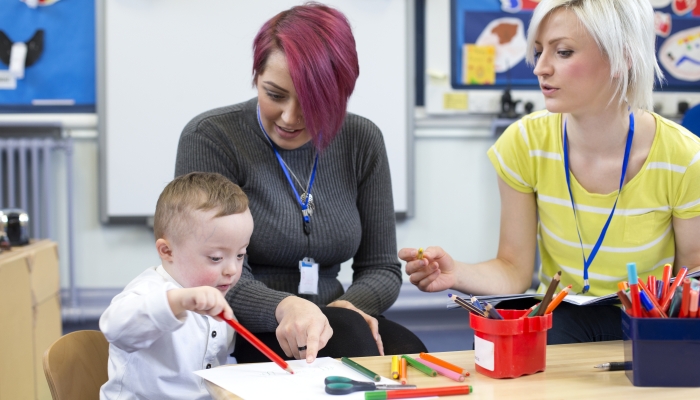
This post may contain affiliate links; please see our terms of use for details.
- Special needs preschools provide a gentle introduction to education for children with additional needs.
- A special needs preschool will provide an inclusive classroom and specialized teachers who are able to meet the individual needs of the children in their care.
- It may take time for your child to adjust to the new environment, especially if this is their first time in childcare.
- You can help with the transition process by talking about preschool, visiting preschool, and reading books about preschool.
- Your child’s special education teacher will create an individualized education program to ensure your child gets the most out of their time in early childhood special education.
Preschool special education settings provide an inclusive and welcoming environment to young learners. The specialized preschool teacher will be experienced in transitioning children to preschool services, but it’s likely brand new to you. If this is the first time your child is joining childcare, you may feel particularly daunted by the idea of somebody else taking care of your child.
To aid the transition to special needs preschool, you should work alongside the preschool and kindergarten teachers to prepare your child. Your child’s teachers have lots of experience and training in successfully transitioning children with disabilities, so be sure to get their advice when preparing your child.
The most important thing is to be positive, focus on the elements your child will enjoy, and reach out to the teachers and other parents for support when necessary. The transition to kindergarten often comes with challenges, but these can be especially daunting to families of children with disabilities.
Preparing for the Transition
It can take time to adjust to change, and preparation is key for a smooth transition. Here are some things you can do to help your child prepare for preschool special education:
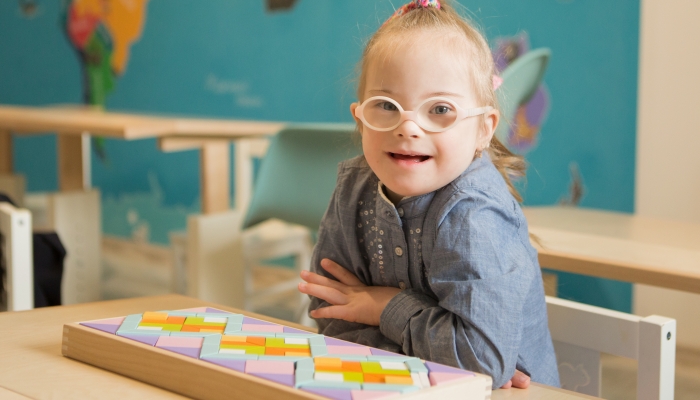
Start the Conversation Early
Make sure your child knows what’s going to happen. Be informative, clear, and honest. Explain where they’ll be going and what it will be like. The sooner you start these conversations, the better.
- Hardcover Book
- Karst, Patrice (Author)
- English (Publication Language)
- 40 Pages – 09/05/2023 (Publication Date) – Little, Brown Books for Young Readers (Publisher)
Books are a great way to open up conversations about new topics. If your child is nervous about spending time apart from you, The Invisible String is a great book to reassure them. Preschool, Here I Come is a good book for teaching your child what to expect at preschool; from basic preschool rules to fun preschool activities, this engaging picture book covers all the basics.
- Steinberg, D.J. (Author)
- English (Publication Language)
- 32 Pages – 07/02/2019 (Publication Date) – Grosset & Dunlap (Publisher)
Visits and Familiarization
The preschool should offer your child an introductory session to meet the staff and familiarize themselves with the classroom. How this is managed varies between preschools, but you’ll likely be invited to attend the first session with your child.
A friendly face can make a huge difference on the first day of preschool, so it’s worth getting friendly with the other parents. Meeting up with other new starters informally before the first day gives your child the opportunity to make friends, so why not suggest a park trip for all the new starters?
- DAY & NIGHT ROUTINE CHART – To create a day-night schedule that your child prefers, you will need our routine chart for morning and evening. One of the highlights of our refrigerator magnets is checkboxes. After your kids complete their tasks, you can check one of the boxes as a reminder!
- UPGRADED DESIGN – Our magnetic routine chart can be used as a daily schedule checklist, a reminder sheet, a night reward chart for girls, a morning visual schedule for toddlers, a good responsibility chart for kids’ behavior. We want to help your child develop lifelong habits that will build a foundation for their success!
- ENJOYABLE AND CLARITY – With this schedule refrigerator magnet, it’s an excellent way to keep track of your kids’ daily routine. Children will achieve a great sense of accomplishment when they use this toddler daily routine to complete their tasks.
- EFFECTIVE COMBO SET- One morning routine chart & one night routine chart whiteboard, all with strong magnetic backing. 27 static tasks stickers are included. The combo set fits most refrigerators. The magnetic, dry erase routine chart (8″ x 10.5″) is the perfect size to fit your fridge.
If you’re accustomed to slow mornings at home, getting up and out for preschool can be a bit of a shock. Having a pictorial morning checklist your child can work through to ensure they’re ready on time can help; we love this cute one. It may take a few weeks to get the hang of your new routine, so go gently. Remember, the world won’t end if your kid is late to preschool.
Collaborating with the Preschool Staff
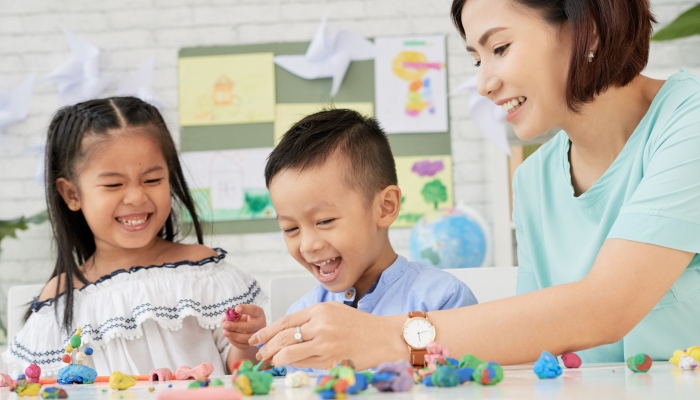
The preschool special education staff will be taking care of your child during the day, so it’s essential to build a strong relationship with them.
Building a Relationship with Teachers and Staff
As the world’s leading expert on your kid, you are best placed to advise the preschool staff of your child’s individual needs. They will likely have many questions for you to help your child settle into this new environment and encourage their development.
Regular communication between home and nursery is essential, so ensure you can keep in touch during the school year. This might be parents’ evenings, regular phone calls, or email communication. Don’t be afraid to ask questions about how your child is getting on at preschool and whether there’s anything you can work on together at home.
At-Home Strategies to Ease the Transition
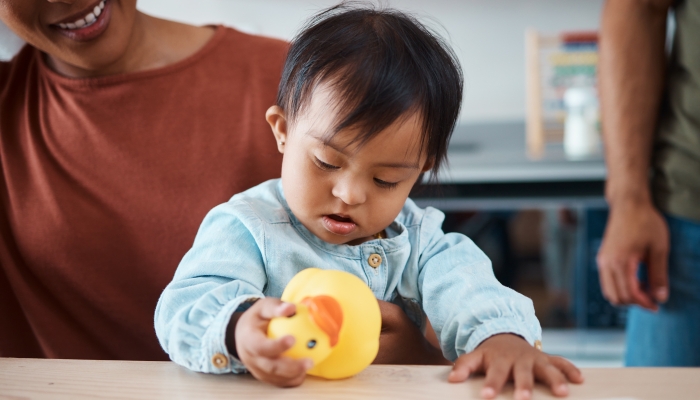
There will be some new rules and expectations at school, which might be one of the biggest challenges for kids to overcome when starting preschool. By communicating with your child’s educators, this is something you can begin working on at home before school even starts.
Consistent Routines
If your child benefits from routines, it’s worthwhile asking for an outline of the preschool’s daily routine in advance. This will allow you to prepare your child and start copying the routine at home. For example, you may want to align your snacktime with school’s so your child eats at the same time each day.
It will also benefit your child to establish consistent bedtime and wake-up routines (as much as possible; it’s not always easy with children with additional needs). Try to ensure your child gets a good night’s sleep before preschool, so they have enough energy to make it through the day. Preschool programs can be tiring, especially for kids who are used to the relative calm of home.
Reinforcing Skills and Independence
Encourage independence to help your child get the most out of preschool. Ask the teacher what skills they’ll be working on with your child. Often, preschools teach things like how to put coats on, take turns, and wash hands, so it will help if your child has already mastered these basic skills.
One of the things many special needs parents worry about is communication. Will your child be understood and be able to make themselves heard in a group environment?
Work on your child’s communication skills before transitioning to preschool, and educate the teachers on your child’s communication needs. If your child uses communication aids, give the preschool staff an informal lesson on utilizing these.
The First Day and Beyond
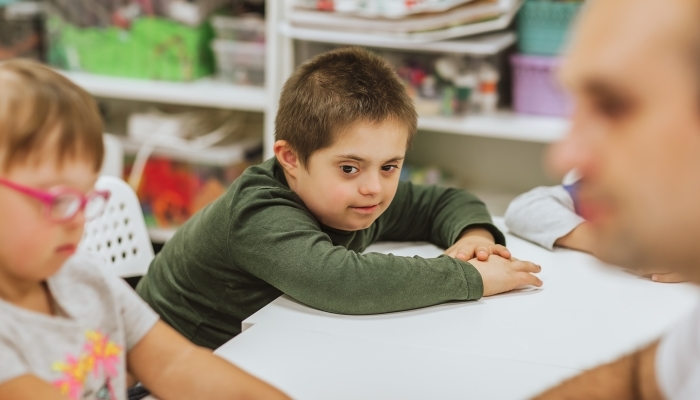
The first day can be daunting for you as well as your child. Here are some tips to help:
The Drop-off
Prepare your child in advance; you may even want to practice saying goodbye to each other. Though you may be a ball of anxiety, try not to let your child see this. Ooze positivity, confidence, and excitement for your child. Be mindful not to dismiss their feelings, but be firm about what will happen.
If your child is nervous, draw a heart onto each of your hands so you can feel connected even when apart. Reassure them that you’ll be back to collect them very soon. The first time can be particularly scary for children who aren’t always sure their parents will return as promised.
Don’t be afraid to call preschool later in the morning to find out if your child is settled. Sometimes, it’s nice to be reassured that they’re happy and content. If they won’t settle, you can always collect them early and try again the next day; there’s nothing wrong with taking baby steps toward your child’s independence.
Monitoring Progress and Adjustments
The preschool special education staff will have the experience and training to track your child’s adjustment. All children are different; some settle more easily, whereas others can take a long time to feel comfortable at preschool.
Listen to the staff when they give advice, but don’t be afraid to make your own suggestions too. You know your child best, so if you think some modifications might help your child settle, don’t be afraid to be a special needs advocate for your child.
Key Features of Special Needs Preschools
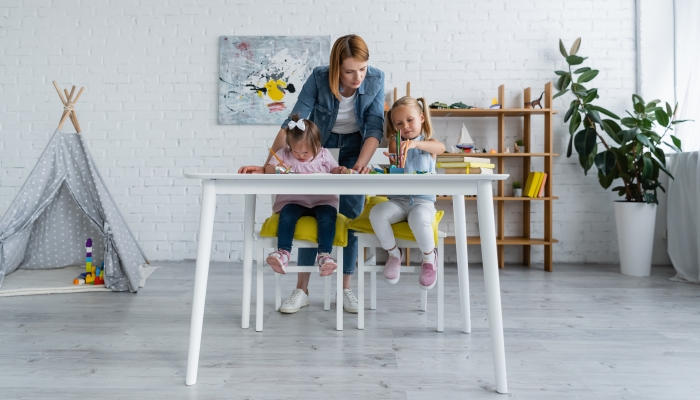
Special education services for children with disabilities are similar to a traditional preschool environment in many ways, though there are key differences.
Specialized Staff
The staff in a special needs preschool are trained to work with children with a huge variety of needs. The higher staff ratios in special education services allow for more one-on-one time in the classroom, and the teachers are likely to have the right support in place to create a safe, nurturing, and productive classroom environment for all children.
Tailored Curriculum
The specialized staff can create individualized learning plans, tailoring the curriculum to your child’s individual needs. Not only this, but the higher staff ratio means they’re actually able to implement this curriculum and give your child a good education.
Inclusive Environment
A special needs classroom will feature modified equipment, sensory toys, and plenty of space. Simply put, the classroom has been designed as a place for all children to succeed.
Not only this, the inclusive classroom learning environment will be designed for the children. Children with ADHD will not be expected to sit quietly on their carpet spot or face punishment; instead, learning will be done in an inclusive way.
Don’t be afraid to ask how the classroom environment will meet your child’s needs; the teachers will likely be more than happy to show off their provisions.
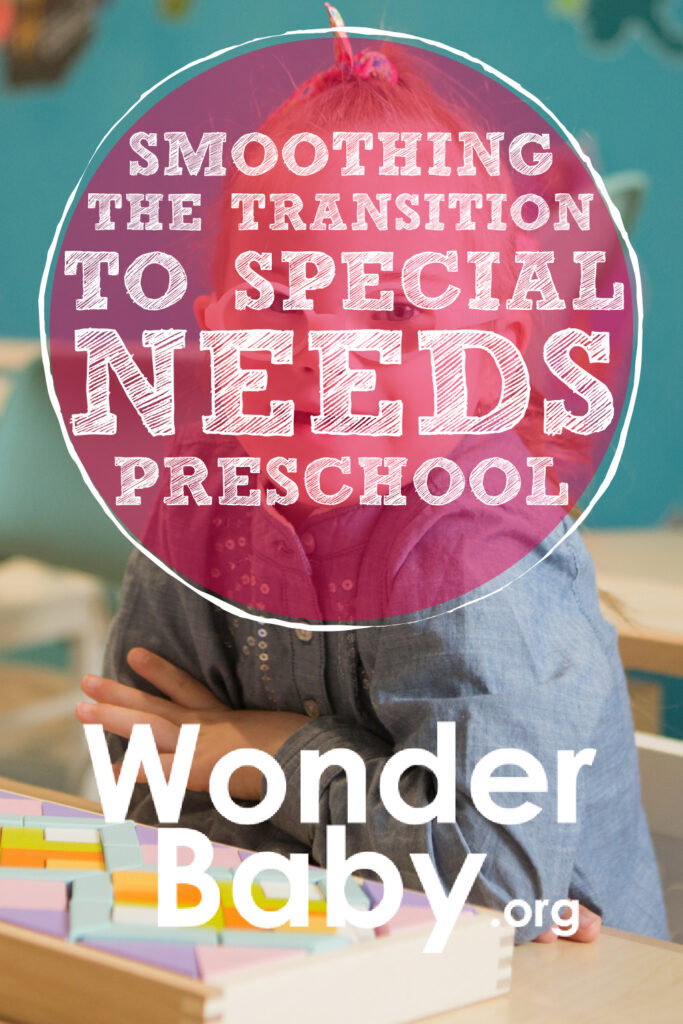
Related Posts

Eye Conditions and Syndromes, Visual Impairment
Neuralink Announces Plans to Restore Sight to the Blind with Brain Chip
Elon Musk’s company Neuralink has announced plans to begin human trials of its new “Blindsight” brain chip by the end of 2025.

IEPs
What Should I Bring to My Child’s First IEP Meeting?
Prepare for your child's first IEP meeting with confidence! Discover exactly what documents to bring, including educational records, medical info, and questions to ask.

Special Needs
5 Spring Cleaning Tips for Families of Children with Disabilities
Spring cleaning is an opportunity to create a more accessible, organized, and supportive space for your child with disabilities. Declutter, deep clean, and refresh!


